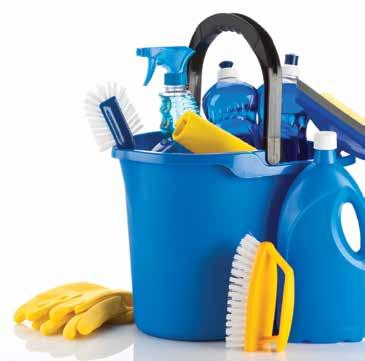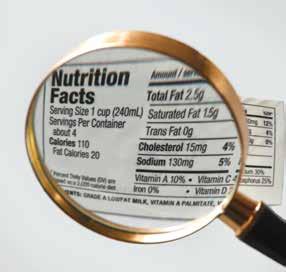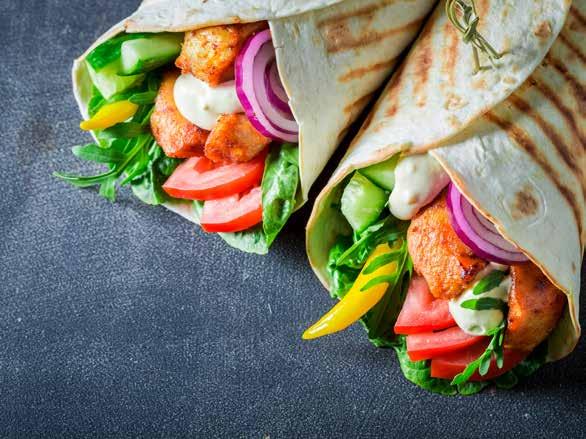CITY OF CHARLES STURT FOOD SAFETY INFORMATION FOR FOOD BUSINESSES

Your food business . . . . . . . . . . . . . . . . . . . . . . . . . . 3 Notification 4 Environmental Health Officers 5 Inspections 7 Basic Essentials 8 Skills and Knowledge . . . . . . . . . . . . . . . . . . . . . . . . 9 Hand Washing 10 Temperature Control . . . . . . . . . . . . . . . . . . . . . . . 11 2 Hour/4 Hour Rule 12 Prevention of Food Contamination 13 Tea Towels 15 Cleaning 15 Sanitising of Food Contact Surfaces 16 Storage of Personal Goods and Chemicals 17 Suitability and Maintenance . . . . . . . . . . . . . . . . 18 Designing a New Food Business 19 Home Based Food Businesses . . . . . . . . . . . . . 20 Extras 21 Product Labelling 22 Record Keeping 22 Allergens 23
Reward and Recognition . . . . . . . . . . . . . . . . . . . 24 Celebrating Success 25
Food Complaints . . . . . . . . . . . . . . . . . . . . . . . . . . . 26 Food Poisoning 27 Other Common Food Related Complaints 28 Need More? . . . . . . . . . . . . . . . . . . . . . . . . . . . . . . . . 29 Other Useful Resources 30
1
INDEX
WELCOME
This information has been developed to help you to:
• Comply with the requirements of the Food Safety Standards.
• Ensure that the food you sell to your customers is safe.
• Design and fit out a new food business.

YOUR FOOD BUSINESS

A food business is any business that handles or sells any type of food or drink, regardless of whether it is a commercial or charitable/community activity; or whether it is a once off occasion.
All food businesses, regardless of how big (e.g. large manufacturing bakery) or how small (e.g. business operating from home), must comply with the Food Act 2001 and Food Safety Standards – particularly chapter 3 of the Standards.

Notification
Whether you are taking over an existing business, completing a new building, considering a new business from home, or transporting foods, you need to notify Council before operating.
Notification forms are available:
• Online at charlessturt.sa.gov.au/ foodbusinessnotification;
• By phoning Council on 8408 1111 and we’ll post one out; or
• In hard copy form at Council’s Civic centre located at 72 Woodville Road, Woodville.
You will only need to complete this form once, unless your business details change.
4
Environmental Health Officers
Council’s Environmental Health Team consists of a number of officers authorised under the Food Act who are able to assist food businesses comply with the Food Act and the Food Safety Standards.
These officers have a duty to ensure that food businesses provide food to the public that is safe and suitable to eat and they are your first stop when considering operating a new or already established food business.
Environmental Health Officers can help you with:
• designing a kitchen that flows correctly and is easy to clean;
• advice on suitable fixtures, fittings and surfaces;
• advice on food hygiene practices;
• providing ongoing assistance with your requirements under the Food Act and Food Safety Standards.

5

Inspections
Your food business will be inspected on a routine basis by an Environmental Health Officer to ensure you are complying with the Food Act and Food Safety Standards.
The majority of food businesses are inspected annually; however, this frequency can change according to risk depending on the foods that are handled by the business and on the level of compliance of the business. For example, most manufacturing bakeries are inspected every 6 months, whereas most confectionary shops are inspected every 18 months. Risk will be determined at initial inspections and reviewed at further inspections.
Inspections are generally unannounced and officers will always introduce themselves and have photo identification available for you to verify who they are.
A standard assessment form is used for inspections to assess compliance with the National Food Safety Standards, based on the following categories (where applicable):
• Receiving foods
• Storage of foods
• Processing of foods
• Display of foods
• Packaging of foods
• Transportation and distribution of foods
• Recall / food disposal
• Health, hygiene and knowledge
• Premises and hygiene
Where non-compliance is identified at a routine inspection, a timeframe is negotiated for a follow up inspection to be performed.
Nominal risk businesses are not generally subject to routine inspections. Nominal risk businesses are those that only handle low risk pre-packaged foods; however, this does not include manufactures or distributors. Manufacturers and distributors will be inspected irrespective of foods handled.
7
BASIC ESSENTIALS

Skills and Knowledge
You must ensure that persons handling food have adequate skills and knowledge in food safety and food hygiene.
What does this mean?
Food handlers must:
• be capable to do their work in ways that ensure your business produces safe food;
• understand the issues associated with food safety and safe food handling practices that are relevant to your business and the jobs they do;
• ensure food is protected from harmful bacteria and foreign contaminants; and
• maintain the premises and themselves in a clean and sanitary condition.
Food Safety Training
You are invited to undertake free online food safety training through the I’m Alert program and Do Food Safely. The training consists of a series of presentations and interactive tasks which covers all aspects of the Food Safety Standards. Training acknowledgement forms can be printed for training completed in specific sections; or, if all sections are completed in one session, a Certificate is available for printing. It takes less than 2 hours to complete the entire training. So why not start training today!?! The programs are available at charlessturt.imalert.com.au and dofoodsafely.health.vic.gov.au
9
Hand Washing
Washing your hands properly is one of the easiest ways to help prevent the spread of food poisoning bacteria.

Take care to wash your hands before and after handling food, as well as any other time your hands are likely to be a risk of spreading bacteria, for example: after handling money, using the toilet, sneezing, touching hair, handling garbage, or using cleaning equipment.
Hand wash facilities are to be:
• used only for hand washing – not as a slop sink for waste water or a sink for washing or storing dishes;
• clear at all times – meaning no storage of boxes and/or cleaning equipment in front of the basin;
• provided with soap and disposable paper towels (ideally from a dispenser) at all times – tea towels must not be used for cleaning or drying hands;
• provided with a waste receptacle in close proximity for the disposal of used paper towels;
• provided with a continuous supply of warm running water (e.g. from a mixer tap or single outlet);
• of a size that allows easy and effective hand washing; and
• located within areas where food handlers work, if their hands are likely to be a source of contamination of food.
If you choose to use disposable gloves remember they are designed to protect food, not to protect hands. Therefore, gloves should be:
• changed as often as you would normally wash your hands; and
• used once only and then thrown away.
10
Temperature Control
You must receive, store, display, and transport potentially hazardous foods under temperature control.

Potentially hazardous foods (PHFs) are foods that are required to be kept at certain temperatures to minimise the growth of any harmful bacteria that may be present or to prevent the formation of toxins in the food, for example:
• raw and cooked meat and poultry;
• dairy products, e.g. milk and custard;
• seafood;
• cut fruit and vegetables;
• cooked rice and pasta; • eggs; and
• gravies and soups.
The temperature at which these foods need to be kept is:
• At or below 5°C; or
• At or above 60°C.
PHFs stored between 5°C and 60°C are considered to be in the temperature danger zone and must be used quickly or discarded. You can ensure the temperature of your food is in the safe zone by inserting your probe thermometer into food, or placing it between two products and measuring the temperature without piercing your product.
11
2 Hour/4 Hour Rule
The 2 hour/4 hour rule is a guide as to how long PHFs can be kept out of temperature control while still remaining safe to eat, by applying the following time limits:
Total time
Under 2 hours
Ok to use or refrigerate at 5°C or less
between 5° C and 60° C
2 to 4 hours Over 4 hours
What you should do
Ok to use
Throw away
For example: A café freshly pre-prepares sandwiches between 10.30am and 11.30am (1 hour in the temperature danger zone). These sandwiches can now be displayed unrefrigerated for 3 hours, with any leftovers being discarded. However, it is quite in the café that day, so at 12.30pm some of the sandwiches are placed into the fridge for sale later. The food handler marks the sandwiches to show they can only be held unrefrigerated for 2 hours before being discarded.
If using this guide you will need to maintain records or demonstrate how you are monitoring what time food is taken out of temperature control, and how long the food remains out of temperature control to determine when the food should be rerefrigerated, immediately used or discarded.
12
Prevention of Food Contamination
You must ensure food is protected from the likelihood of contamination at all times.

Receiving - Randomly inspect food at the time of delivery. You have the right to refuse to accept food if it is damaged or delivered out of temperature control.
Storage – Cover food with a food grade material such as a lid, plastic wrap or aluminium foil, store food off the floor and store raw meat separately or below readyto-eat foods.
Preparation – Ensure the food preparation areas are maintained in a clean and sanitary condition, are in good repair and are free from pests, dirt and dust.
Display – Ideally cover all food. If this is not possible then you must effectively supervise the display and provide protective barriers such as permanent sneeze guards.
Packaging – Use food grade material to package foods and store packaging covered in a clean environment.
Transport – Ensure the vehicles used are enclosed and maintained in a clean and sanitary condition and good repair. Any food transport vehicle should not also be used to transport pets and you must not smoke inside the vehicle.
13
Egg Safety
Egg safety is important because there is always a chance that eggs are contaminated by Salmonella when they are laid. If eggs are handled incorrectly, contamination can spread around the kitchen on hands and utensils and get into food, which can make you sick.
If raw or partially cooked egg products are made, these should be handled in very specific ways. Examples of raw egg products can include:
• sauces and dressings - such as mayonnaise, hollandaise, aioli and egg butter
• desserts - such as tiramisu, mousse and fried-ice cream batter
• drinks - such as raw egg protein drinks, egg nog
• scrambled or other egg dishes that are not cooked thoroughly
Minimising the risks
Raw egg products are high risk potentially hazardous foods, therefore food businesses and individuals need to be aware of appropriate preparation risks and controls. Controls include:
• Don’t use eggs if they’re cracked or dirty or wash eggs to remove dirt

• Store your eggs in the fridge away from other foods contamination.
• Prepare fresh daily, consume within 24 hours and discard any left overs
• Refrigerate raw egg products immediately after preparation until consumption
• Always wash hands after handling these products
• Always thoroughly clean and sanitise all surfaces and equipment used to prepare these foods
14
Tea Towels
Tea towels and other cloth towels are very absorbent due to their fabric weave. These material fibres aid in the multiplication of bacteria by providing an ideal environment for bacteria to lodge and as a result grow, potentially increasing the risk of cross contamination.
A used tea towel can spread bacteria to your hands, as well as, to food contact surfaces such as equipment, crockery and cutlery.
What You Should Not Do With a Tea Towel or Cloth
Towel:
• wipe or dry your hands – instead use single use disposable towels;
• cover food – instead use food grade materials such as plastic wrap, aluminium foil, or lids to cover food;
• hang them to dry for later – instead replace them with another dry clean towel;
• dry laundered cloths inside – instead dry towels in the sun to help kill harmful bacteria;
• use if soiled or wet – instead only use clean and dry towels;
• use the same towel for a number of different tasks – instead treat cloth towels as single use items.
Cleaning
Keep your premises clean to reduce contamination and discourage pests. Aim to have no accumulation of garbage, recycled matter, food waste, dirt, grease or any other visible matter within the food handling areas.
One way to achieve this is to adopt a cleaning schedule to help ensure areas are regularly cleaned and all areas are attended to.
Don’t forget the outside waste and recyclables storage area!

15
Sanitising of Food Contact Surfaces
It is important to note that cleaning and sanitising are separate processes. A surface must be thoroughly cleaned before it is sanitised to ensure the effectiveness of the sanitiser in killing bacteria!
What is the difference between cleaning and sanitising? – Cleaning means the removal of visible dirt or residual food matter. It may leave behind bacteria that are too small to be seen. Sanitising is using heat or chemicals to destroy any dangerous bacteria that might remain after cleaning.
What do I Sanitise? – Preparation benches, chopping boards, storage containers, food utensils, meat slicers, thermometers and anything else that comes into contact with read-to-eat foods.
When do I Sanitise? – Between preparing raw foods and ready-to-eat foods. For example, if a person slices raw meat for frying and then tomatoes for a salad, the board and knife must be cleaned and sanitised between these two tasks. However, the food contact surface would not need to be cleaned and sanitised if the sliced raw meat and tomatoes were
to be placed in a pot to be cooked for a casserole. This is because both foods are raw and will be cooked before being eaten.
Equipment used to process potentially hazardous foods, must be cleaned and sanitised every 4 hours while in use. For example, if a meat slicer is used to slice ham all day, it needs to be cleaned and sanitised at least once every 4 hours to prevent food contamination from occurring.
How do I Sanitise? – Use a food grade sanitiser and follow the manufacturer’s instructions; some sanitisers need to be mixed with water, others need to be wiped off after a certain time. Ensure sanitisers are not stored in a diluted state for longer than 24 hours unless otherwise specified by the manufacturer’s instructions. Alternatively, automatic equipment such as commercial dishwasher or glass cleaners can be used to clean and sanitise equipment that operates at high temperatures (above 80oC). Most dishwashers and glass cleaners sanitise through this process.
16
Storage of Personal Goods and Chemicals
Personal items such as bags, mobile phones, cigarettes and keys are likely to contain foreign materials such as hair, dust, dirt and mirco-organisms, all of which have the potential to contaminate food, food contact surfaces and equipment. Your business needs to have adequate storage facilities to store personal items so as to prevent the likely contamination of food and/or food contact surfaces.
Consider the following:
• lockers for staff to store their bags or clothes;
• designate a drawer for mobile phones and keys;
• have a separate fridge for staff food, or store staff food on the lowest shelf in the fridge and label it “staff only”.
Additionally, cleaning chemicals are dangerous if ingested, so ensure chemicals are clearly labelled and stored away from food and food preparation areas.

17
Suitability and Maintenance
Premises need to be designed and constructed in a way that minimises opportunities for food contamination.

Premises and equipment need to:
• be appropriate for their intended use;
• provide adequate space;
• allow for easy and effective cleaning;
• be sealed to prevent the entry of dirt, dust and pests;
• prevent the absorption of grease, food particles or water;
• have flooring that is laid so that there is no ponding of water;
• as far as practicable, be unable to provide harbourage of pests;
• be made from materials that will not contaminate food; and
• be maintained in a good state of repair and working order.
18
Designing a New Food Business
It is important to check with Council’s Development Section prior to commencement of any proposed work, as Planning and/or Building approval may be required.
Prior to opening your new food business, an Environmental Health Officer can inspect your premises, free of charge, to provide you with advice on the best way to set up your new premises.
Some areas to consider when looking at new premises are, in addition to those mentioned in the previous section:
• how many sinks are there? And what will you need to use each one for?;
• hand washing facilities must be:
1 connected to warm running water delivered from a single lever-style spout;
2 close (i.e. within 5 metres) to food preparation areas;
3 . of sufficient size to wash hands, face and arms.
• is there hot and cold water supplied to wash-up and hand wash sinks?;
• is there a grease arrestor or will you be required by SA Water to have trade waste approval?;
• is there an adequate exhaust system to remove any grease or steam appropriate to your food processing activities?;

• is there sufficient lighting (natural and/ or artificial) in food preparation areas?;
• if you have a toilet leading directly to a food preparation area is there an air-lock or self-closing door with mechanical ventilation available?
• is there sufficient space to allow for separate storage of food and non-food related items?
You are strongly encouraged to make early contact with an Environmental Health Officer prior to opening your food business to ensure the design and fit out of the premises will meet the requirements of the food laws and to assist you to sell safe and suitable foods.
19
Home Based Food Businesses
The use of residential homes for manufacturing/selling food is increasing in popularity; however, it is important that the facilities available and the foods being produced are in fact appropriate. High risk or large volumes of food are not appropriate to be manufactured in a home based setting; therefore, it is strongly recommended that contact is made with Council’s Environmental Health Team to discuss any proposals for home base food businesses prior to their commencement.
All food businesses must comply with the same requirements; however, in the case of home based premises there may be certain exemptions granted. This will be based on a risk assessment of the

premises and the foods being handled. For more information on whether your proposed business is suitable to do from home, refer to our home based food business brochure at charlessturt.sa.gov. au/HomeBasedFoodBusinesses
For example hand washing facilities: Most domestic kitchens that are well maintained may comply with the Standards except for the requirement to have a dedicated permanent hand washing facility. A kitchen that has a double bowl sink may comply if one bowl is used exclusively for hand washing when food is being prepared for sale. A single bowl sink that is also used for food preparation would not meet this requirement; however, Council may issue an exemption that will allow the use of alternative hand washing arrangements (e.g. hand washing facilities in nearby bathroom) if they consider the facilities to be adequate.
20
EXTRAS

Product Labelling
There are various labelling requirements manufacturers must display on their packaging, these requirements depend on the type of food being sold. Refer to the Guide to the Labelling of Packaged Food for Retail Sale which can be downloaded from sahealth.sa.gov.au
A Nutrition Information Panel (NIP) is also required to be displayed on your product unless you have an exemption. There is an online calculator that can assist with generating NIPs see foodstandards.gov.au

For assistance with labelling, contact SA Health on 8226 7100.
Record Keeping
Manufacturers need to keep records of:
• ingredients’ batches used to enable traceability for example, if an ingredient is recalled by another producer;
• your own product batches and where they have been distributed, in case you are required to announce a food recall;
• the telephone numbers for relevant government authorities such as SA Health and your local Council who should be contacted immediately if a food recall of your product is initiated.
22
Allergens
Food allergies are very serious, causing illness and even death. Food allergies occur in around 1 in 20 children and 1 in 50 adults. The most severe allergic reaction is known as anaphylaxis – which is potentially life threatening. Most people who have severe food allergic reactions in Australia have them when eating food prepared by another person.
Allergens can include: Peanuts, tree nuts, milk and milk products, egg, crustaceans (shellfish), fish, sesame seeds, soybeans, lupin, cereals containing gluten namely, wheat, rye, barley, oats and spelt and their hybridised strains, added sulphites.
A food business is not obliged to provide an allergen free meal to a customer unless the business agrees to, but there are steps that can be taken to reduce the risks to your customers. Consumers also have a legal right to receive written or verbal information on allergen content if they ask for it when buying food.
Top tips for preparing allergen free foods:
• Take customer requests about allergens seriously. Give accurate information about the food and its ingredients.
• Set up an allergen matrix for each menu item which will help you and your staff easily identify the common
allergens when customers ask for allergen information.
• Have a procedure and policies in place for food requests made by allergic customers. This may mean that they advise customers they are unable to cater for special dietary requirements.
• Prepare food safely using separate equipment and utensils to prevent cross contamination.
• Train all staff in food allergen risks, management, communication and the consequences of serving up a contaminated meal to an allergic customer.
Free training and allergen matrix templates are available at foodallergytraining.org.au
Information provided courtesy of SA Health. For more information visit SA Health Website – Allergen information for food businesses.
23

REWARD & RECOGNITION
Celebrating Success
The City of Charles Sturt participates in the Food Safety Rating Scheme.
The Food Safety Rating Scheme is a state wide program. Eligible businesses have an opportunity to achieve a star rating (3, 4 or 5 stars) based on their compliance with the food laws during their routine inspection. Businesses are awarded a certificate identifying their achieved Star Rating.
Please speak with your Environmental Health Officer regarding your business’s eligibility as some exclusions apply.

25
FOOD COMPLAINTS

Food Poisoning
If a customer believes that food from your business has made them ill, the first step you should take is recommend the customer consult a doctor to provide them with any treatment they may need and so the doctor can collect a specimen sample. Specimens can be analysed to find the likely bacteria responsible for the customer’s illness and help identify the cause.
The second step is not to panic: the customer may have become sick from food they consumed at home or may be suffering from some other illness unrelated to unsafe food.
The City of Charles Sturt may inspect your business if it is reported to be the source of confirmed cases of food poisoning; the inspection will be conducted free from prejudice.
Food poisoning is generally caused by pathogenic (harmful) bacteria, viruses or chemical toxins in food or water. Some of these microbes infect our bodies and grow, while others produce a toxin in food. The end result is illness, and in very severe cases food poisoning may cause long term injury or death.
Food does not need to be spoiled to cause food poisoning. Food that looks, smells and tastes fine can still make a customer ill if:

• food has not been handled correctly;
• food has not been kept under temperature control; or
• food surfaces had not been adequately sanitised.
27
Other common food related complaints
Foreign Objects Found in Food
Foreign objects found in food can include plastic, metal, glass, stones, fibre, hair, and insects, or anything that you would not expect to find in that particular food. So take care to prevent contamination by covering food during storage, processing and display.

Poor Food Handling
Examples of poor food handling include food handlers not washing their hands then handling ready to eat foods with their bare, unclean hands or handling money with the same gloved hand used for handling ready to eat food.
Food Spoilage
Foods which have not been stored correctly are more than likely to deteriorate or go mouldy. Insects can also spoil foods such as weevils and food moths: these particular pests feed on a wide variety of foods including flour, cereals, rice, biscuits and other dry goods. It is important to place all dry goods, once open, in a lidded container and discard
foods which have been kept for long periods to prevent these common pests from causing a nuisance.
Dirty Food Premises
The type of complaints Council receives regarding dirty food premises are often to do with bad odours, the storage or disposal of garbage or simply unclean premises. These complaints do not occur on a frequent basis as most food businesses take care to keep their premises clean; however, problems do arise occasionally.
28
NEED MORE INFORMATION

If you require further information regarding food safety, please contact Council’s Environmental Health Team on 8408 1111.
Other Useful Resources
SA Department of Health – Food Section
Phone: 8226 7100
Food Safety Australia New Zealand Advice line: 1300 652 166 foodstandards.gov.au

30
CHARLESSTURT.SA.GOV.AU // COUNCIL@CHARLESSTURT.SA.GOV.AU 8408 1111 (AFTER HOURS AVAILABLE) //


























